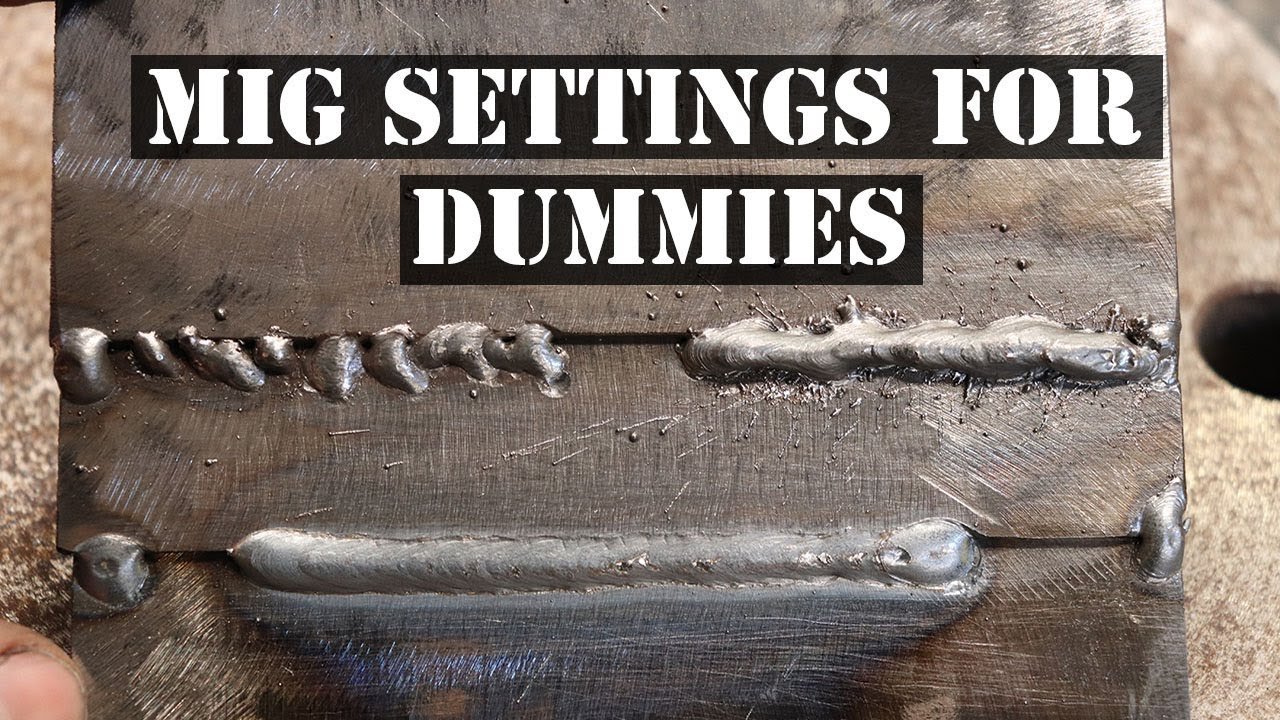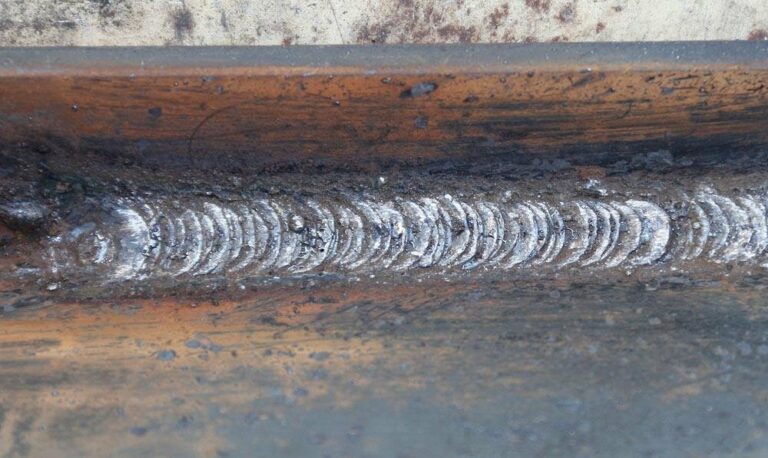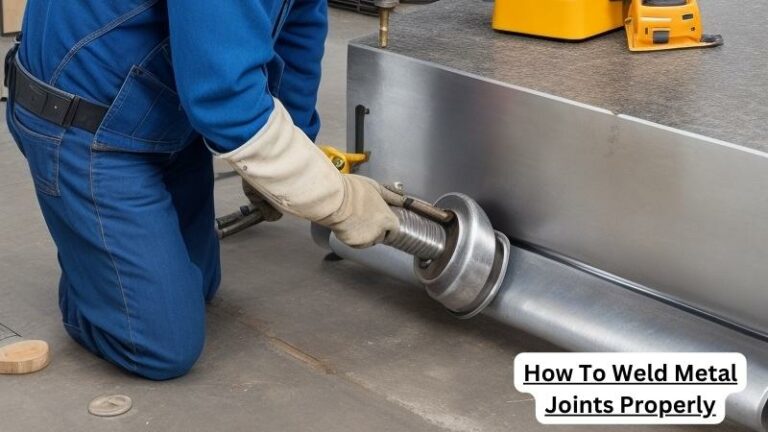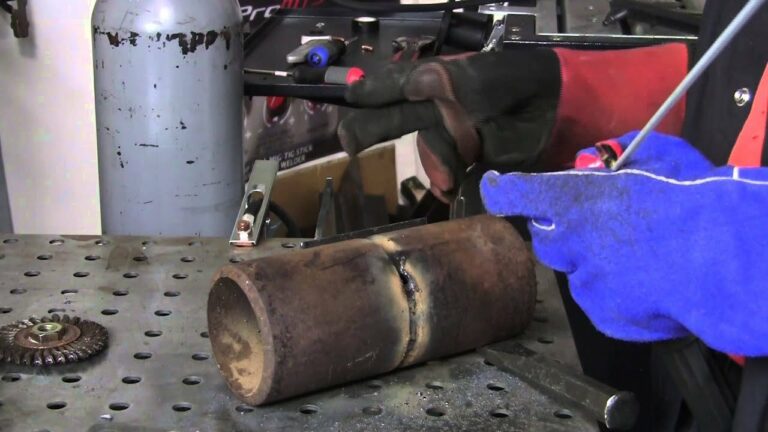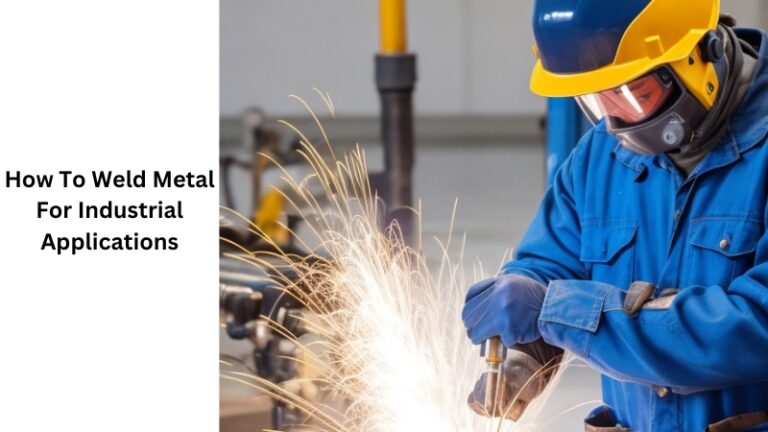Master The Art: Welding With A Mig Welder
Looking to pick up the art of welding? Well, you’ve come to the right place! In this article, we’ll show you how to weld with a MIG welder, the perfect tool for beginners and professionals alike. Whether you’re a DIY enthusiast or aspiring welder, mastering the art of MIG welding can open up a world of possibilities. So, without further ado, let’s dive right into the exciting world of MIG welding and learn how to weld with a MIG welder. Get ready to create strong and durable welds with ease!
How to Weld with a MIG Welder
Welding with a MIG welder, or Metal Inert Gas welder, is a versatile and effective technique for joining metals. Whether you are a beginner or an experienced welder, understanding the process and techniques involved in MIG welding can help you achieve strong and clean welds. In this comprehensive guide, we will walk you through the steps to weld with a MIG welder, covering everything from safety precautions to troubleshooting common issues. So let’s dive in and discover the world of MIG welding!
Section 1: Safety Precautions
Before starting any welding project, it is crucial to prioritize safety. MIG welding involves heat, electricity, and potentially harmful fumes and sparks. Protecting yourself and your surroundings should be your top priority. Here are some important safety precautions to follow:
- Wear protective clothing: Always wear a welding helmet, safety glasses, welding gloves, long-sleeved shirts, long pants, and closed-toe shoes.
- Ensure proper ventilation: Welding produces fumes, so work in a well-ventilated area or use exhaust fans and fume extraction systems to remove the harmful gases.
- Prepare your workspace: Clear the area of flammable materials, and make sure you have a fire extinguisher nearby.
- Inspect your equipment: Regularly check your welding equipment for any damage or malfunctions before starting a project.
- Ground your workpiece and welding equipment: Connect the ground clamp to the workpiece and ensure a proper electrical ground to prevent electric shock.
Section 2: Understanding MIG Welding
MIG welding is a relatively easy-to-learn welding process that uses a consumable wire electrode and a shielding gas to create the weld. The wire electrode is continuously fed through the welding gun, melting into the weld pool and creating the bond. Here are the key components involved in MIG welding:
2.1 MIG Welding Machine
The MIG welding machine consists of a power source, wire feeding mechanism, and various controls. It provides the electrical power required for welding and regulates the wire feed speed and voltage settings. Familiarize yourself with the different controls and settings on your MIG welding machine before starting to weld.
2.2 Shielding Gas
Shielding gas is essential in MIG welding as it protects the weld pool from the surrounding atmosphere, preventing contamination and oxidation. The most commonly used shielding gas is a mixture of argon and carbon dioxide (CO2). Different mixtures are suitable for different types of metals, so refer to the manufacturer’s recommendations for the correct shielding gas to use.
2.3 Wire Electrode
The wire electrode, often referred to as the welding wire, is a consumable spool of wire that feeds through the welding gun. The diameter and type of wire electrode you choose depend on the material you are welding and the thickness of the metal. Consult the welding wire manufacturer’s recommendations for the appropriate wire for your project.
Section 3: Setting Up Your MIG Welder
Before you start welding, you need to set up your MIG welder correctly. Here are the steps to follow:
3.1 Selecting the Wire Diameter and Type
Choose the appropriate wire diameter and type according to the metal you are welding. Thicker metals require larger wire diameters, while thinner metals require smaller wire diameters. Also, consider the type of wire that suits your project, such as solid-core wire or flux-core wire.
3.2 Installing the Wire Electrode
Feed the wire electrode through the wire feeding mechanism of the MIG welder, following the manufacturer’s instructions. Make sure the wire is properly aligned to avoid feeding issues during welding.
3.3 Setting the Wire Feed Speed and Voltage
Refer to the welding parameter chart provided by the manufacturer or consult welding reference guides to determine the appropriate wire feed speed and voltage settings for your specific project. Adjust these settings on your MIG welder accordingly.
3.4 Connecting the Gas Cylinder
Attach the shielding gas cylinder to the MIG welder, following the manufacturer’s instructions. Ensure a tight connection, and check for any gas leaks using a leak-detection solution.
3.5 Adjusting the Gas Flow Rate
Set the appropriate gas flow rate according to the manufacturer’s recommendations. This ensures adequate shielding gas coverage during welding. Too low of a flow rate can result in insufficient shielding, while too high of a flow rate can waste gas.
Section 4: MIG Welding Techniques
Now that your MIG welder is set up, let’s explore some fundamental welding techniques to help you achieve high-quality welds:
4.1 Joint Preparation
Proper joint preparation is essential for successful welding. Clean the metal surfaces to be welded, removing any rust, paint, or grease. Use a wire brush or grinder to achieve clean and smooth surfaces. Ensure the joint edges are properly aligned and fit tightly together.
4.2 Welding Positions
MIG welding can be performed in various positions: flat, horizontal, vertical, and overhead. Familiarize yourself with each position and practice welding in different orientations to enhance your skills and versatility.
4.3 Welding Techniques
The key to successful MIG welding lies in maintaining a stable arc and controlling the weld pool. Here are some techniques to help you achieve this:
- Maintain a consistent travel speed: Move the welding gun steadily along the joint at a constant speed to prevent uneven welds.
- Keep a consistent distance and angle: Hold the welding gun at a 15-45 degree angle and maintain a consistent distance between the gun and the workpiece.
- Watch the weld pool: Focus on the weld pool rather than the arc to ensure proper penetration and fusion.
- Practice good gun control: Control the wire stick-out, which is the distance between the contact tip and the workpiece, for optimal welding performance.
4.4 Welding Techniques for Different Materials
Different metals require specific welding techniques. Here are some tips for welding common materials:
- Mild steel: Use a push technique, directing the welding gun away from the weld pool, to achieve good penetration.
- Stainless steel: Utilize a slight weave motion to prevent excessive heat buildup and distortion.
- Aluminum: Use a push technique with a slight backward and forward motion to create a clean and strong weld.
Section 5: Troubleshooting Common Issues
Even experienced welders face challenges during welding. Understanding common issues and their solutions can help you overcome these hurdles. Here are some common MIG welding problems and troubleshooting tips:
5.1 Excessive Spatter
Spatter refers to the unwanted particles of molten metal that can project from the weld. To reduce spatter, try these solutions:
- Adjust the voltage settings and wire feed speed to achieve optimal parameters for your project.
- Clean and prepare your workpiece thoroughly before welding to remove any contaminants.
- Check the contact tip and replace it if it is worn or damaged.
- Use an appropriate anti-spatter spray or gel on your workpiece to minimize spatter.
5.2 Porosity
Porosity refers to the presence of gas pockets within a weld, which can weaken its strength. To prevent porosity, consider these steps:
- Ensure proper shielding gas coverage by adjusting the flow rate and double-checking your gas connections.
- Clean the workpiece thoroughly to remove any oil, rust, or paint that could release gases during welding.
- Avoid excessive travel speeds, as fast welding can trap gases within the weld pool.
5.3 Uneven Welds
Uneven welds can occur due to inconsistent travel speed, improper wire feed settings, or incorrect welding technique. To achieve even welds:
- Maintain a steady travel speed throughout the welding process.
- Adjust the wire feed speed and voltage settings to find the optimal balance for your project.
- Ensure consistent gun movement and maintain a proper distance and angle between the gun and the workpiece.
5.4 Burn-Through
Burn-through happens when excessive heat causes a hole or penetration through the metal. To avoid burn-through:
- Reduce the heat input by lowering the voltage or wire feed speed.
- Use a multiple-pass technique, allowing the metal to cool between passes.
- Consider using a smaller wire diameter for thinner metals.
Section 6: Practice and Master Your Skills
Welding is a skill that improves with practice. To become proficient in MIG welding, dedicate time to practicing different techniques and welding various materials. Here are some additional tips to help you master your skills:
- Attend welding classes or workshops to learn from experienced professionals.
- Seek feedback and guidance from fellow welders or welding forums.
- Experiment with different welding angles, travel speeds, and wire feed settings to understand their effects on the weld.
- Practice on scrap pieces of metal before tackling important projects.
Section 7: Conclusion
MIG welding is an accessible and efficient welding process, suitable for both beginners and experienced welders. By following proper safety precautions, setting up your MIG welder correctly, and mastering various welding techniques, you can achieve strong and clean welds on a variety of metals. Remember to practice regularly and be patient with yourself as you develop your skills. With dedication and perseverance, you can become a proficient MIG welder and tackle exciting welding projects with confidence. Happy welding!
How to MIG Weld for Beginners: MIG Welding Basics
Frequently Asked Questions
What is MIG welding and how does it work?
MIG welding, short for Metal Inert Gas welding, is a welding process that uses a continuously fed wire electrode to create an electrical arc melting the metal and joining it together. The wire electrode serves as both the filler material and the electrode, and a shielding gas, typically argon or a mixture of argon and carbon dioxide, is used to protect the weld from contamination.
What materials can be welded using a MIG welder?
MIG welding is versatile and can be used to weld various materials, including carbon steel, stainless steel, aluminum, and other non-ferrous metals. The process works well with thicker materials, typically ranging from 0.6 mm to 12 mm in thickness.
What safety precautions should be taken when welding with a MIG welder?
When welding with a MIG welder, it is essential to wear appropriate personal protective equipment (PPE) such as a welding helmet, gloves, and a flame-resistant apron. Ensure proper ventilation in the workspace to prevent exposure to harmful fumes. It is also important to have a fire extinguisher nearby and to follow all safety guidelines provided by the manufacturer.
What are some common troubleshooting tips for MIG welding?
If you are experiencing issues with your MIG welding, there are a few things you can check. Make sure the welding wire is properly fed and the drive rolls are gripping it correctly. Ensure the contact tip is not clogged or worn out. Adjust the wire speed and voltage settings according to the material thickness. Also, check the gas flow rate and ensure the grounding clamp is securely attached.
What are the advantages of using a MIG welder?
MIG welding offers several advantages, including high welding speeds, excellent control over the weld pool, and the ability to weld in various positions. It produces clean and precise welds, and the process is relatively easy to learn and use, making it suitable for both beginners and experienced welders.
Can a MIG welder be used for outdoor welding?
Yes, a MIG welder can be used for outdoor welding. However, it is important to consider wind conditions as they can affect the shielding gas coverage. In windy environments, a windbreak or a welding curtain can be used to minimize the impact of the wind. Additionally, it is crucial to ensure proper safety measures and take precautions to protect yourself and others from potential hazards.
Final Thoughts
In conclusion, learning how to weld with a MIG welder can be a valuable skill for both DIY enthusiasts and professionals in various industries. By following the step-by-step instructions and safety guidelines discussed in this article, you can confidently tackle welding projects with ease. Remember to prepare your materials, set up the equipment correctly, and practice proper technique to achieve strong and durable welds. With practice and experience, you can become proficient in using a MIG welder to join metal pieces effectively. So, get started and master the art of welding with a MIG welder today.
